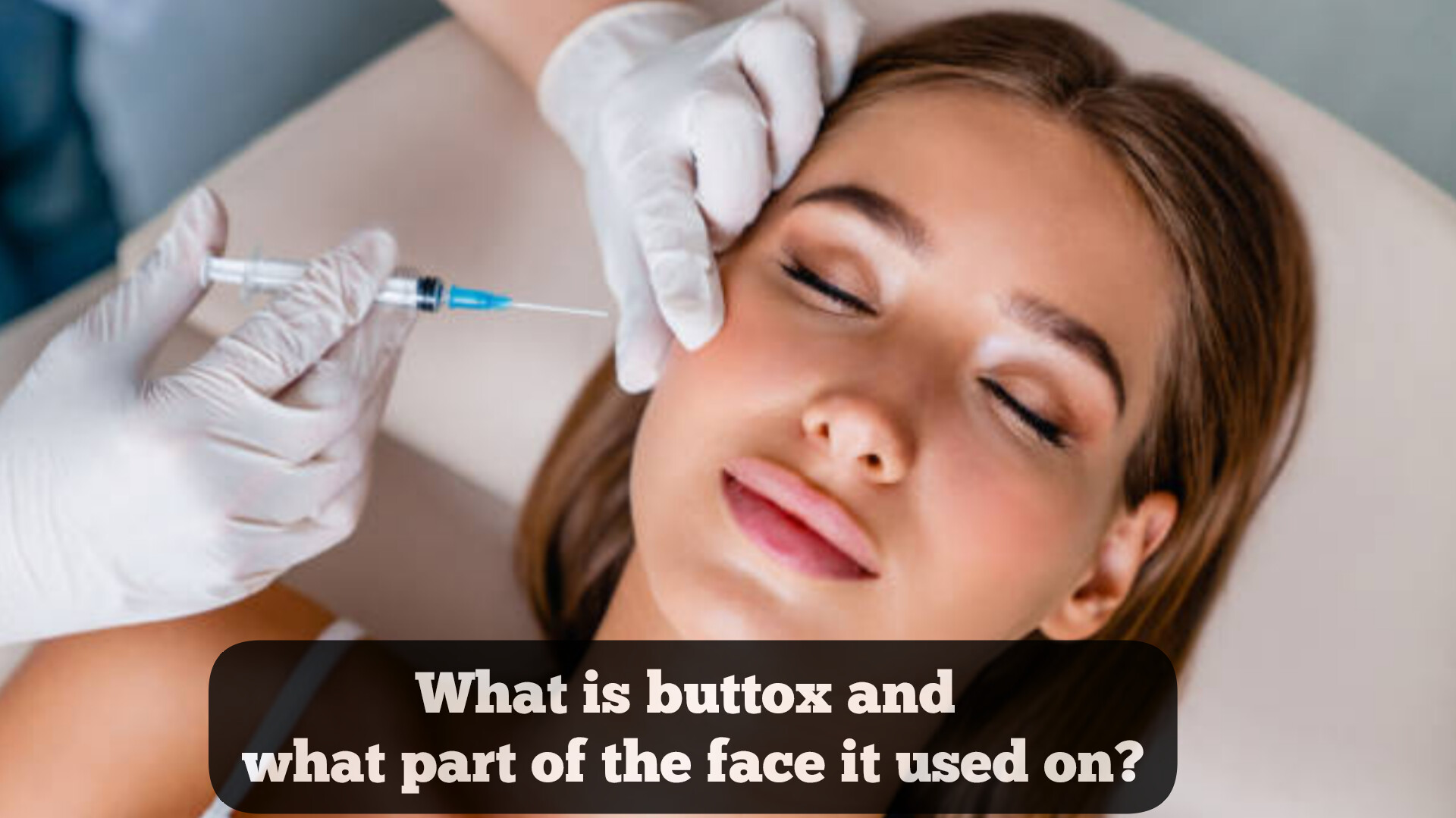What is Botox and what part of the face is it used on? know
Botox, formally known as botulinum toxin, stands as a sought-after cosmetic treatment, hailed for its ability to reduce facial wrinkles and fine lines. Initially created for medical treatment, Botox has become a staple in aesthetic medicine, respected for its efficacy and minimal invasiveness. This talk explores the essence of Botox, its diverse applications, benefits, associated risks, and important insights for potential recipients.
Understanding Botox
Composition of Botox
Botox comes from the bacterium Clostridium botulinum. This neurotoxin, given in regular doses, can temporarily activate muscles by blocking nerve impulses within minutes. This movement helps reduce the appearance of dynamic wrinkles caused by muscle activity.
How Botox Works
Botox works by blocking the release of acetylcholine, a neurotransmitter essential for muscle contraction. When injected into targeted muscles, it induces relaxation, which results in a smoother skin surface. Effects usually appear within days and last for several months.
Duration and Effectiveness of Botox Treatments
Post-treatment results are usually visible within 3 to 5 days, with effects appearing around the two-week mark. Benefits usually last for 3 to 6 months, after which muscle activity gradually resumes, requiring repeat sessions for permanent results.
Common Areas for Botox Application
Forehead Lines
Forehead furrows, or horizontal lines, are the result of repetitive movement of the muscles of the forehead. Botox can expertly smooth these wrinkles, creating a rejuvenated appearance.
Frown Lines
Glabellar lines, or brow lines, appear as vertical creases between the eyebrows. Botox helps relax the muscles here, reducing the prominence of these lines.
crow’s feet
Crow’s feet, fine lines from the corners of the eyes, are often a result of smiling or squinting. Botox injections can improve these lines, offering a smoother appearance.
Bunny Lines
Bunny lines manifest on the nasal bridge. Botox can mitigate these lines by relaxing the underlying musculature.
Chin Dimpling
Chin dimpling, colloquially termed “orange peel” skin, arises from hyperactive chin muscles. Botox can smoothen the skin in this area.
Neck Bands
Neck bands, or platysma bands, are vertical neck lines. Botox injections can relax these muscles, reducing the visibility of these bands.
Benefits of Botox
Reduction of Wrinkles and Fine Lines
Foremost among Botox’s benefits is the substantial reduction in wrinkles and fine lines, fostering a more youthful and revitalized appearance.
Preventive Measure for Aging
In addition to treating existing wrinkles, Botox plays a preventive role. Regular treatment can prevent the appearance of new lines by preventing repetitive muscle movements.
Minimal Invasive Procedure
Botox injections are minimally invasive, entailing no incisions or substantial downtime. This aspect makes it an appealing option for those seeking cosmetic enhancement sans surgery.
Quick Results and Recovery Time
The procedure is swift, often concluded within 15 to 30 minutes. Recovery is minimal, enabling individuals to resume routine activities almost immediately.
Botox for Medical Conditions
Treatment for Chronic Migraines
Botox has garnered approval for chronic migraine treatment. It diminishes migraine frequency and severity by relaxing muscles and blocking pain pathways.
Botox for Hyperhidrosis (Excessive Sweating)
Excessive sweating is a symptom of hyperhidrosis, which is effectively treated with Botox. . By inhibiting the nerves that stimulate sweat glands, Botox reduces sweating in regions like the underarms, palms, and feet.
Use in Muscle Spasticity
Botox is employed in treating muscle spasticity, a condition marked by tight or stiff muscles. It relaxes these muscles, offering relief from discomfort and enhancing mobility.
Botox for Overactive Bladder
Botox can also address overactive bladder by relaxing bladder muscles, thus mitigating symptoms of urinary incontinence and frequent urination.
Risks and Side Effects
Common Side Effects
Typical side effects of Botox include redness, swelling, and bruising at the injection site. These effects are usually mild and transient.
Rare but Serious Risks
In rare instances, Botox can elicit serious side effects such as muscle weakness, difficulty breathing, or swallowing. Seeking medical assistance as soon as these symptoms appear is imperative.
Importance of Professional Administration
To curtail risks, it is paramount that Botox be administered by a qualified and seasoned professional. This ensures precise injection techniques and accurate dosing.
Who Can Get Botox?
Ideal Candidates for Botox
Ideal Botox candidates are those seeking to diminish wrinkles and fine lines, who are in overall good health and harbor realistic expectations about the outcomes.
Age Considerations
Botox is generally administered to adults aged 18 to 65. While there is no upper age limit, individuals should consult with a professional to ascertain Botox’s suitability for them.
Health Conditions That May Affect Suitability
Certain health conditions, such as neuromuscular disorders or allergies to Botox components, may affect suitability. A thorough medical consultation is necessary to assess potential risks.
Preparing for Botox Treatment
Consultation with a Professional
A consultation with a qualified professional is the initial step. During this session, the patient’s medical history, concerns, and desired outcomes are deliberated.
Pre-Treatment Guidelines
Patients might be advised to eschew alcohol and specific medications, such as blood thinners, prior to the procedure to minimize bruising risk.
What to Expect During the Procedure
The Botox procedure entails a series of minute injections using a fine needle. The injection count depends on the treatment area and wrinkle extent.
Post-Treatment Care
Immediate Aftercare
Post-procedure, patients should avoid manipulating the treated area and maintain an upright posture for several hours. Cold packs can alleviate swelling.
Long-Term Care and Maintenance
For enduring results, patients should follow up with their professional for maintenance treatments every few months. Sun protection and a robust skincare regimen are also recommended.
When to Seek Medical Advice
Should patients encounter unusual side effects, such as severe pain, vision issues, or muscle weakness, medical advice should be sought immediately.
Cost of Botox Treatments
Factors Influencing the Cost
The cost of Botox treatments can fluctuate based on factors such as the practitioner’s expertise, geographic location, and the amount of Botox utilized.
Average Cost Breakdown
On average, Botox treatments range from $300 to $600 per area, with variations contingent on the treatment region and provider.
Insurance Coverage for Medical Botox
For conditions like chronic migraines or hyperhidrosis, Botox might be covered by insurance. Patients should consult their insurance provider for specific coverage details.
FAQs About Botox
How Long Does Botox Last?
Botox effects typically last between 3 to 6 months. Regular treatments are requisite for maintaining results.
Is Botox Painful?
Most patients report minimal discomfort during the procedure. The fine needles used ensure brief and manageable pain.
Can Botox Be Combined with Other Treatments?
Yes, Botox can be combined with other cosmetic treatments such as dermal fillers, chemical peels, and laser treatments for enhanced results.
How Often Should Botox Treatments Be Done?
For optimal outcomes, Botox treatments should be scheduled every 3 to 6 months, depending on individual response and desired results.
Conclusion
Botox stands as a versatile and efficacious treatment for wrinkle reduction and addressing various medical conditions. Its minimally invasive nature, rapid results, and preventive benefits render it a favored choice among those seeking cosmetic enhancements.
If you want to Read more articles so visit on world wide galaxy

